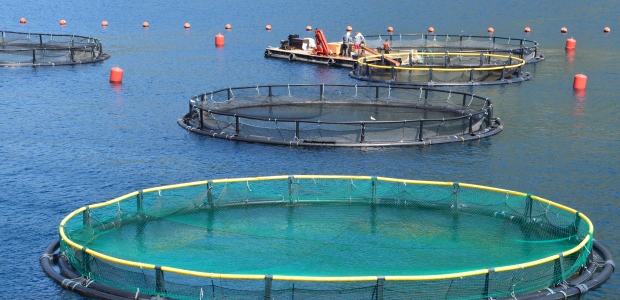
New Rule Greenlights Aquaculture in Gulf of Mexico Federal Waters
"While this framework is the first of its kind in federal waters, the states already support many successful and thriving aquaculture operations in their waters," said Eileen Sobeck, assistant NOAA administrator for fisheries. "Allowing this type of seafood production will not only reduce U.S. dependency on imports, but also provide a domestic source of sustainable fish protein and create jobs."
The National Oceanic and Atmospheric Administration published a final rule Jan. 11 that implements the first U.S. comprehensive regulatory program for aquaculture in federal waters -- specifically, federal waters in the Gulf of Mexico. "As demand for seafood continues to rise, aquaculture presents a tremendous opportunity not only to meet this demand, but also to increase opportunities for the seafood industry and job creation," said Kathryn Sullivan, Ph.D., NOAA's administrator. "Expanding U.S. aquaculture in federal waters complements wild harvest fisheries and supports our efforts to maintain sustainable fisheries and resilient oceans."
These federal waters begin where state jurisdiction ends and extend to 200 miles offshore. In this case, federal waters begin three nautical miles off Louisiana, Mississippi, and Alabama and nine nautical miles off Texas and the west coast of Florida.
"While this framework is the first of its kind in federal waters, the states already support many successful and thriving aquaculture operations in their waters," explained Eileen Sobeck, assistant NOAA administrator for fisheries. "Allowing this type of seafood production will not only reduce U.S. dependency on imports, but also provide a domestic source of sustainable fish protein and create jobs."
The rule authorizes NOAA Fisheries to issue permits to grow species that include red drum, cobia, and almaco jack in these waters for an initial period of 10 years; it attracted thousands of public comments.
"The permit process includes comprehensive safeguards to ensure healthy oceans and coasts and considers other uses of ocean space, such as fishing. The rule implements environmental safeguards, including a baseline survey, monitoring, and reporting requirements. In addition to a NOAA permit, farming fish in federal waters also requires permits from the U.S. Environmental Protection Agency and the U.S. Army Corps of Engineers. NOAA Fisheries is working with these agencies to set up a coordinated permitting process for the Gulf," according to the agency's announcement.
"This is all about managing and expanding seafood farming in an environmentally sound and economically sustainable way," said Michael Rubino, director of the NOAA Fisheries Office of Aquaculture. "The permit process we've laid out accounts for the region's unique needs and opens the door for other regions to follow suit."
Three offshore mussel farms received federal permits from the U.S. Army Corps of Engineers last year; two were off Massachusetts and one off California. And the the Corps of Engineers and EPA are weighing an application for a company seeking to farm fish in federal waters off California.